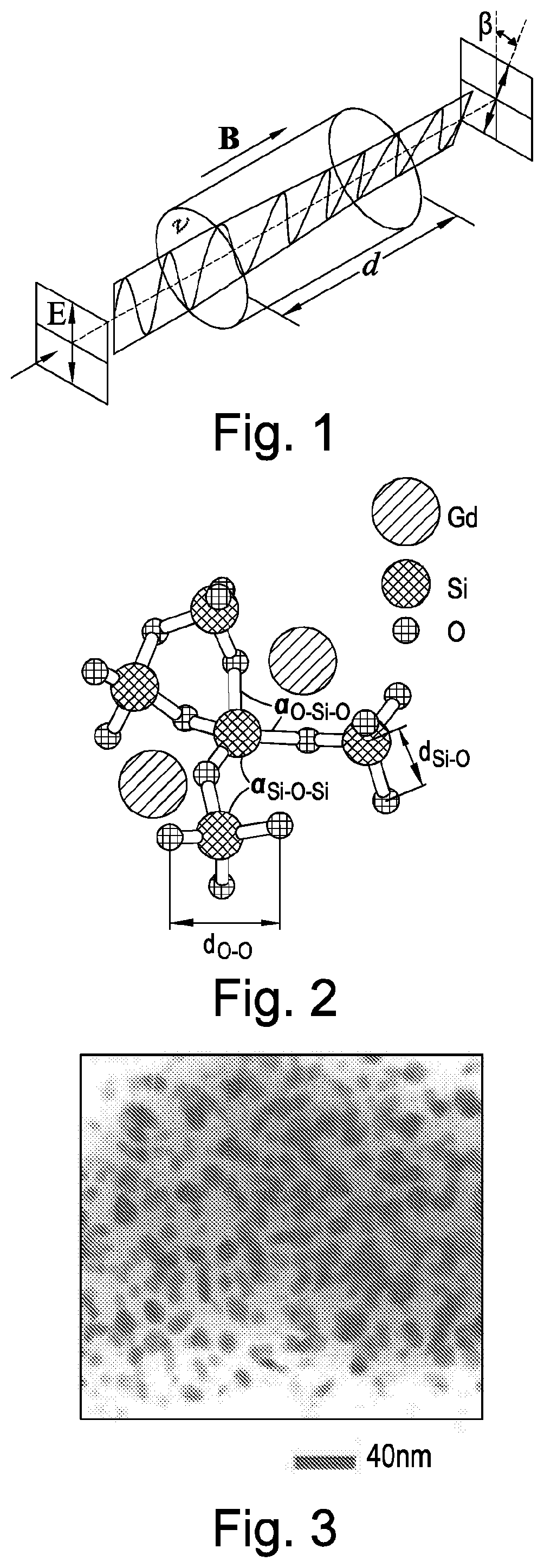Magnetic field sensors, methods of detecting a magnetic field, and related magnetically responsive light propagating components and optical devices
a magnetic field and sensor technology, applied in the field of magnetic field sensors, can solve the problems of low precision, high coupling and propagation loss of fibers, and relatively expensive magnetic field sensing systems, and achieve the effect of effective zero magnetic momentum, enhanced magnetic effect of dopant in host material, and high verdet constan
- Summary
- Abstract
- Description
- Claims
- Application Information
AI Technical Summary
Benefits of technology
Problems solved by technology
Method used
Image
Examples
example 1
[0066]A sol gel cylinder was tapered on a drawing tower and then inserted in a fluorosilicate tube with a suitable inner to outer diameter ratio before being pulled into a fiber using the rod in tube technique. The fiber was doped with 0.15% by weight of gadolinium.
example 2
[0067]A phosphosilicate soot was deposited inside a high grade silica tube by the modified chemical vapor deposition (MCVD) and then doped with gadolinium ions by solution doping. After consolidation and collapse, the preform was pulled into a fiber with a dopant of 0.15% by weight of gadolinium.
[0068]Both fibers from the above examples were tested by arranging them as the magnetically responsive light propagating component 420 in a magnetic field sensor 400 as described above. A tunable 1550 nm fiberized laser source was used as the linearly polarized light source 410 and a balanced detector was used as the detector 430. Light from the tunable laser source was launched into a polarizer before being split by a polarization maintaining coupler, as described above in relation to the balanced detector implementation. One of the arms of the coupler constituted the reference and was directly connected to a port of a balanced detector. The other arm was spliced to the fiber under test whi...
PUM
| Property | Measurement | Unit |
|---|---|---|
| Verdet constant | aaaaa | aaaaa |
| length | aaaaa | aaaaa |
| size | aaaaa | aaaaa |
Abstract
Description
Claims
Application Information
 Login to View More
Login to View More - R&D
- Intellectual Property
- Life Sciences
- Materials
- Tech Scout
- Unparalleled Data Quality
- Higher Quality Content
- 60% Fewer Hallucinations
Browse by: Latest US Patents, China's latest patents, Technical Efficacy Thesaurus, Application Domain, Technology Topic, Popular Technical Reports.
© 2025 PatSnap. All rights reserved.Legal|Privacy policy|Modern Slavery Act Transparency Statement|Sitemap|About US| Contact US: help@patsnap.com


